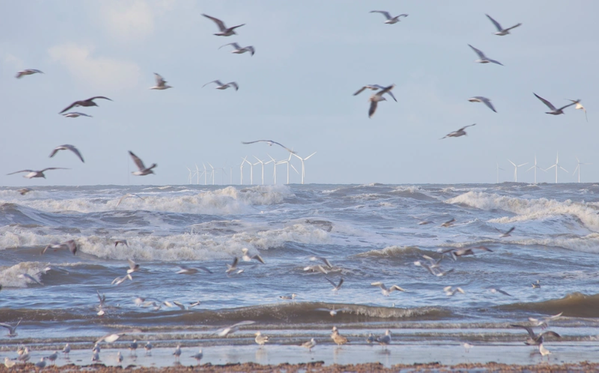
Offshore wind farm builder Ørsted said Wednesday it would help test and commercialize a new technology to collect more and better birdlife data at its wind farms around the world, through an investment into a Norwegian start-up called Spoor.
Spoor is a Norwegian ‘deep-tech’ start-up that has built a specially designed artificial intelligence (AI) system to monitor and track birdlife at offshore wind farms.
By working with Spoor, Ørsted said it would improve its understanding of how birds behave while traveling in the vicinity of its wind farms.
"With a better understanding of bird behavior, wind farm design can be further optimized in line with Ørsted’s commitment to deliver renewable energy that has a net-positive biodiversity impact for all new energy projects commissioned from 2030," the company said.
Ørsted and venture capital firms Nysnø Climate Investments (Nysnø), Wiski Capital, Norrsken Foundation, and Antler have invested in Spoor AI via a seed funding round. Ørsted will also enter into a partnership with Spoor to develop and commercialize its technology at Ørsted’s offshore wind farms.
"Rapid energy transition is a crucial piece of the puzzle in halting and reversing biodiversity loss, as climate change is increasingly one of its biggest causes. But more new wind infrastructure means more interaction with the natural world, which climate action seeks to protect. That’s why Ørsted is looking for new ways to further improve its understanding of that interaction – to minimize potential negative impact alongside action to proactively enhance biodiversity," Ørsted said.
"It is notoriously challenging to monitor bird behavior, which is why the offshore wind industry currently uses precautionary models to estimate possible collisions at wind farms when designing them. Several recent studies, including ones supported by Ørsted, suggest that actual collisions are significantly fewer than currently modeled. The Spoor system can increase our confidence in those predictions, thus increasing our knowledge base and helping us build robust statistical evidence in this field," Ørsted said.
Benjamin Sykes, Vice President and Head of Ørsted’s global center of environmental expertise, said: "Spoor’s technology will help us better understand how different species of birds behave at and around offshore wind farms. It’s also an exciting example of how agile; entrepreneurial companies can deliver high-impact innovation when supported with knowledge sharing and investment by key industry players."
AI for Birds Tracking
According to Ørsted, the unique benefit of Spoor’s system, compared to available alternatives like the combination of high-specification cameras, radars, and human observers, is that the company’s AI technology has been developed to accurately identify and track birds specifically. The Spoor system has no blind spots and is significantly more cost-effective than the alternatives, Ørsted said.
"Once the technology is tested and commercialized, Ørsted and the broader offshore wind industry will have access to significantly more reliable camera arrays than was previously possible, providing better results. In turn, this will enable Ørsted to install many more cameras across a wind farm and get much greater spatial and temporal data coverage to ensure a much better understanding of bird behavior. Ørsted is the first offshore wind developer to invest in Spoor," Ørsted said.



